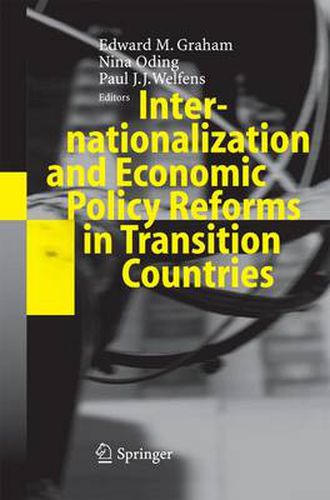Readings Newsletter
Become a Readings Member to make your shopping experience even easier.
Sign in or sign up for free!
You’re not far away from qualifying for FREE standard shipping within Australia
You’ve qualified for FREE standard shipping within Australia
The cart is loading…






This title is printed to order. This book may have been self-published. If so, we cannot guarantee the quality of the content. In the main most books will have gone through the editing process however some may not. We therefore suggest that you be aware of this before ordering this book. If in doubt check either the author or publisher’s details as we are unable to accept any returns unless they are faulty. Please contact us if you have any questions.
Edward M. Graham, Nina Oding and Paul J. J. Welfens Eastern Europe and the former Soviet Union have achieved sustained economic growth in first half of the new decade in the 2V^ century. EU ac cession countries which have joined the EU have benefited mainly from high capital inflows, a reduced risk premium - with shadow effects of this already occurring in the years before explicit membership - and growing trade. While system transformation has undermined trade between Eastern Europe and Russia for several years there are medium prospects for grow ing trade in the whole of Europe. Russia’s case, however, is different from the EU accession countries as a major driving force of economic dynamics is the oil and gas sector which has considerable backward and forward linkages. At the same time this sector apparently is politically quite sensi tive. The Transatlantic Transformation and Economic Development Re search Group has organized several workshops within a major interna tional research project. The project is devoted to analyzing the internatio nalization of the Russian economy and the associated changes in major policy fields. This book contains the revised analytical papers from the St. Petersburg conference in 2003 when the city celebrated its 300 year anniversary. We are very grateful to the Leontief Center for excellent organization of the conference. The paper by Paul J. J.
$9.00 standard shipping within Australia
FREE standard shipping within Australia for orders over $100.00
Express & International shipping calculated at checkout
This title is printed to order. This book may have been self-published. If so, we cannot guarantee the quality of the content. In the main most books will have gone through the editing process however some may not. We therefore suggest that you be aware of this before ordering this book. If in doubt check either the author or publisher’s details as we are unable to accept any returns unless they are faulty. Please contact us if you have any questions.
Edward M. Graham, Nina Oding and Paul J. J. Welfens Eastern Europe and the former Soviet Union have achieved sustained economic growth in first half of the new decade in the 2V^ century. EU ac cession countries which have joined the EU have benefited mainly from high capital inflows, a reduced risk premium - with shadow effects of this already occurring in the years before explicit membership - and growing trade. While system transformation has undermined trade between Eastern Europe and Russia for several years there are medium prospects for grow ing trade in the whole of Europe. Russia’s case, however, is different from the EU accession countries as a major driving force of economic dynamics is the oil and gas sector which has considerable backward and forward linkages. At the same time this sector apparently is politically quite sensi tive. The Transatlantic Transformation and Economic Development Re search Group has organized several workshops within a major interna tional research project. The project is devoted to analyzing the internatio nalization of the Russian economy and the associated changes in major policy fields. This book contains the revised analytical papers from the St. Petersburg conference in 2003 when the city celebrated its 300 year anniversary. We are very grateful to the Leontief Center for excellent organization of the conference. The paper by Paul J. J.